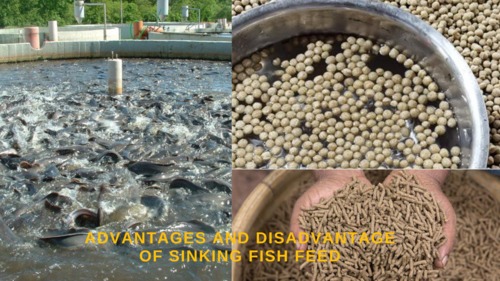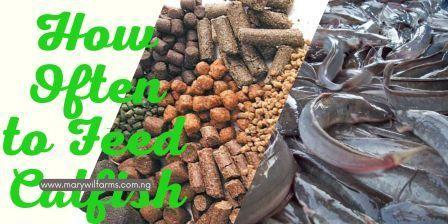Advantages and Disadvantages of Sinking Fish Feed You are not Aware of

Sinking fish feed is designed to descend and settle at the bottom of the fish pond. They cannot float on water. However, sinking fish feed has its advantages and disadvantages.
Note that sinking feed is ideal for bottom-dwelling fish like catfish.
Table of Contents
Advantages of Sinking Fish Feed
Sinking fish feed has several benefits and advantages. Here are some of the advantages:
1. Reduce Aggression and Competition
Sinking feed makes it possible for less aggressive catfish to get feed during the rush.
Most catfish receive their feed while the feed is moving towards the bottom of the pond. This alone more fish to access food simultaneously.
This distribution can reduce aggressive behaviour and competition among fish during feeding.
2. Reduced Waste
Sinking fish feed is less likely to be wasted than floating fish feed. When floating fish feed is used, it tends to drift away from the feeding area, leading to wastage.
On the other hand, sinking fish feed stays in one place, making it easier for catfish to consume all of it. This reduces the amount of feed that goes to waste.
While sinking feed can reduce waste, it is still important to monitor feeding habits and adjust portions to avoid leftover food accumulating at the bottom.
3. Suitability for Bottom Dwellers
Bottom-dwelling fish, such as catfish prefer to feed on sinking feed. These fish have a natural tendency to forage at the bottom of the water body, and sinking fish feed is more suitable for their feeding behaviour.
By using sinking fish feed, catfish farmers can ensure that all their fish are getting the required nutrients.
4. Potential Cost-Effectiveness
Cost-effectiveness is one of the advantages of sinking fish feed. Sinking fish feed is more economical compared to floating feed. This is because the production process for sinking feed is simpler.
Just any catfish farmer can produce sinking feed. All you need is our catfish feed formulas and you are good to go.
Another good thing about producing feed with our formula is that it helps you reduce the cost of feeding your catfish.
Disadvantages of Sinking Fish Fee
While sinking fish food offers some advantages, there are also downsides. Here are some of the disadvantages of sinking fish feed:
1. Difficulty in Monitoring Feed Intake
One of the main disadvantages of sinking feed is that it is difficult to monitor the actual consumption by the catfish. Since the feed sinks to the bottom, it becomes challenging to determine if the fish are eating the feed or if it is being wasted.
2. Causes Poor Water Quality
Sinking feed that is not consumed can accumulate at the bottom of the pond, leading to poor water quality. This can increase organic matter, which can cause oxygen depletion and the growth of harmful bacteria and fungi.
Good water management helps to improve health and reduces the likelihood of diseases that could result in catfish mortality.
Poor water quality resulting from decaying uneaten feed can lead to various health issues for the fish, including stress, susceptibility to diseases, and reduced growth rates
3. Sometimes Leads to Waste
There is a higher likelihood of feed wastage with sinking feed because uneaten feed can settle under the pond, making it inaccessible to the fish.
This not only leads to financial loss but also contributes to pollution in the pond environment.
4. Feeding Efficiency
Sinking feed may not be as efficient as floating feed regarding feed conversion ratios (FCR). Floating feed allows for better observation and control, ensuring that fish are consuming the feed effectively.
Labor Intensive
Managing ponds with sinking feed can be more labour-intensive because it requires frequent cleaning and monitoring of the pond to ensure that feed is removed and does not compromise water quality.
Summary
In summary, sinking feed has several advantages as well as disadvantages. By using sinking fish feed, catfish farmers should ensure that they maintain good water quality. In all, it is cheaper to process and helps in cutting down the cost of foreign feed.




Thanks for the information as i also want to start with fish farming in the flood plains.